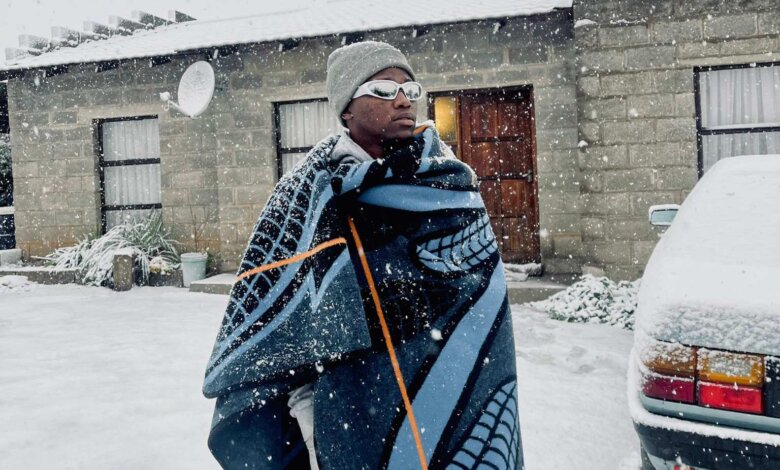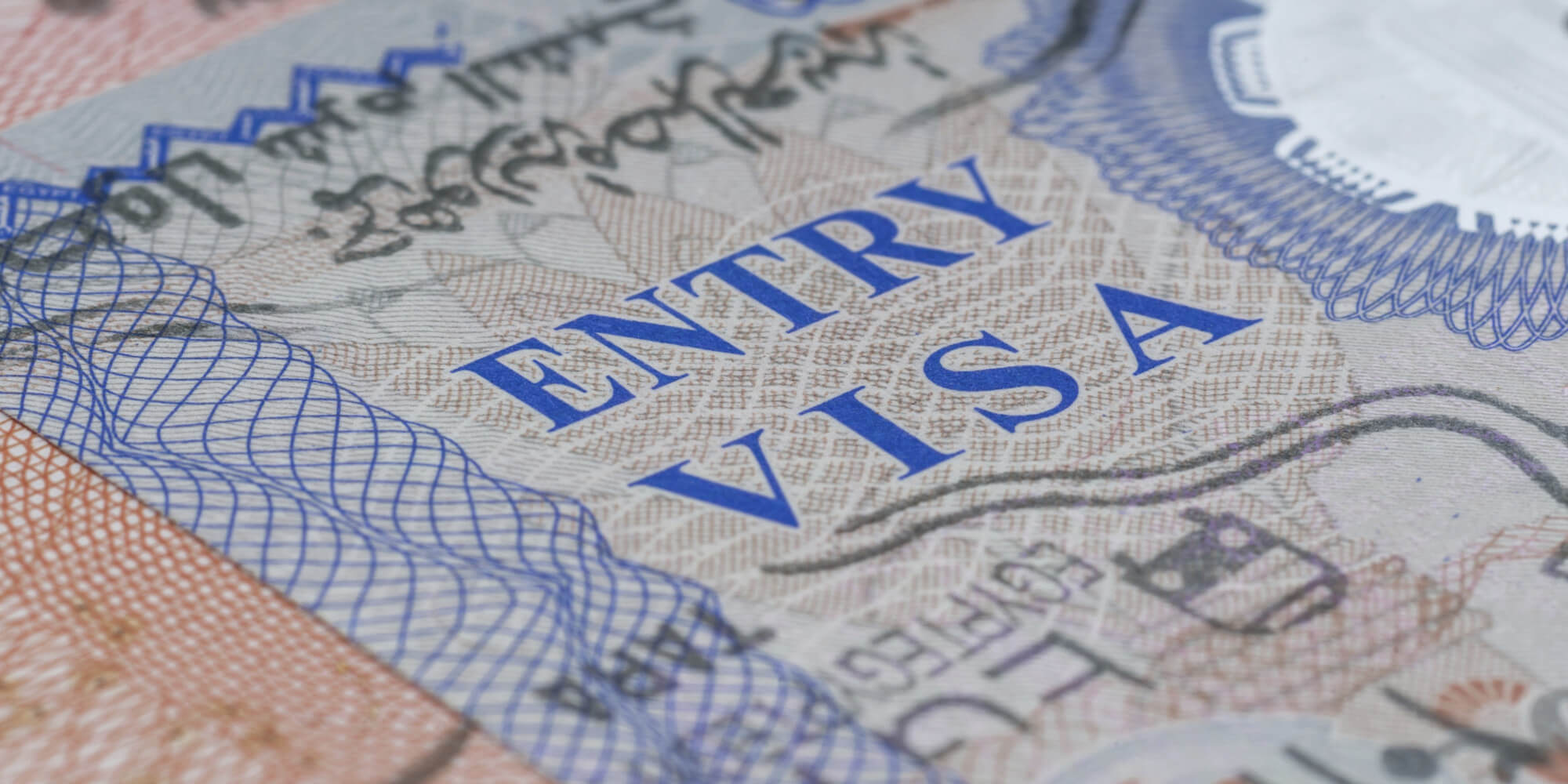
Africa is generally associated with warm climates, but some countries on the continent experience cold temperatures and even light to heavy snowfall in certain regions. This occurs mainly in mountainous areas and high-altitude locations where temperatures drop significantly.
These regions offer unique opportunities for skiing, snowboarding, and other winter sports, attracting tourists and adventure seekers. However, snowfall in these countries can be unpredictable and may not occur every year. Below is a list of countries in Africa that experience heavy to light snowfall:
1. Lesotho
Lesotho is a small mountainous country in Southern Africa, that experiences snowfall during the winter months of June, July, and August. June marks the start of winter, with temperatures ranging from -2°C to 10°C. July is the coldest month, with temperatures dropping as low as -12°C. August signals the end of winter, with temperatures gradually warming up.
The Maluti Mountains, which cover most of the country, receive significant snowfall, with the highest peaks, such as Thabane Ntlenyana, reaching elevations of over 3,400 meters. The capital city, Maseru, occasionally receives light snowfall, but it is rare. However, areas such as Sani Pass and Katse Dam, located in the Mokhotlong District, often receive heavy snowfall, making them popular winter destinations.
Lesotho offers various activities and events during the snow season. Afriski Mountain Resort, located near the Maluti Mountains, provides skiing and snowboarding opportunities. Visitors can also explore the beautiful winter landscapes on snowshoes or hiking trails. The annual Winter Festival, held at Afriski, features live music, food, and snow sports, attracting tourists from around the world.
2. South Africa
South Africa experiences snowfall in certain regions during the winter months. The snow season in South Africa typically runs from June to August, with the majority of snowfall occurring in the mountainous areas of the Western Cape and Eastern Cape with temperatures ranging from -10°C to 0°C.
The Eastern Cape, especially the areas around Graaff-Reinet and the Sneeuberg Mountains, receive snowfall during the winter months. The snowfall in this region can be more significant than in the Western Cape, with some areas receiving up to 10cm of snow. The snow season attracts tourists from all over the world, boosting the local economy. However, the snowfall can also disrupt transportation and daily life, especially in rural areas.
The Western Cape, particularly the regions around Cape Town, experience snowfall in the mountainous areas such as Table Mountain, Matroosberg, and the Cederberg. The snowfall in these areas is often light and doesn’t last long on the ground, but it’s a significant event for the local population and tourists alike.
3. Morocco
Morocco, located in the northwest corner of Africa, is not typically associated with snow. However, the country’s diverse geography, which includes the Atlas Mountains, means that snowfall is not uncommon in certain regions. Temperatures range from -5°C to 0°C, and sometimes as low as low as -20°C on the Atlas Mountains.
The Atlas Mountains, which stretch across central Morocco, are home to several peaks that exceed 4,000 meters in altitude. These high-altitude regions receive significant snowfall during the winter months, typically from December to March. The snowfall can be heavy, with some areas receiving up to 1 meter of snow.
One of the most popular destinations for snow in Morocco is the Oukaimeden ski resort, located about 80 kilometers southeast of Marrakech. Oukaimeden is the highest ski resort in Africa, with slopes reaching altitudes of up to 3,200 meters. The resort typically opens in January and remains open until late March or early April, depending on snow conditions.
In addition to Oukaimeden, other regions in Morocco also experience snowfall during the winter months. The Middle Atlas, for example, receives snowfall in the winter, although it is typically lighter than in the High Atlas. The city of Ifrane, located in the Middle Atlas, is sometimes referred to as the “Switzerland of Morocco” due to its snowy winters and picturesque Alpine-style architecture.
4. Algeria
Algeria experiences snowfall in certain regions during the winter months from December to March, with temperatures between -2°C to 5°C. The country’s diverse geography, which includes the Atlas Mountains and the Sahara Desert, means that snowfall is not uniform throughout the country.
The Atlas Mountains, which stretch across northern Algeria, are home to several peaks that exceed 2,000 meters in altitude. These high-altitude regions receive significant snowfall during the winter months, with some areas receiving up to 1 meter of snow. One of the most popular destinations for snow in Algeria is the Chréa ski resort, located about 50 kilometres south of Algiers. Chréa is one of the oldest ski resorts in Africa, and it typically opens in January and remains open until late March or early April, depending on snow conditions.
In addition to Chréa, other regions in Algeria also experience snowfall during the winter months. The Kabylie region, located in the northern part of the country, receives significant snowfall during the winter, and the city of Tizi Ouzou is often referred to as the “Switzerland of Algeria” due to its snowy winters and picturesque mountain scenery.
5. Kenya
Snow in Kenya is rare, since Kenya is a tropical country located near the equator, and its climate is generally warm and temperate. However, there are a few high-altitude regions in Kenya where snow can occur. The highlands of Kenya, including Mount Kenya, receive occasional snowfall during winter from June to August, with temperatures ranging from 0°C to 10°C.
Mount Kenya, the highest mountain in Kenya and the second-highest in Africa, is one of the few places in the country where snow can be found. The mountain’s highest peaks, including Batian and Nelion, are covered in snow and ice year-round. However, the snowline is typically above 4,500 meters, and the snow is usually only accessible to experienced climbers and trekkers.
In addition to Mount Kenya, there are a few other high-altitude regions in Kenya where snow can occur. These include the Aberdare Range and the Cherangani Hills. However, snow in these regions is extremely rare and typically only occurs at very high altitudes.
6. Ethiopia
Ethiopia, located in the Horn of Africa, experiences snowfall in certain regions during its winter months of December to February, with temperatures between 0°C to 10°C. The country’s diverse geography, which includes high-altitude mountains and plateaus, means that snowfall is not uniform throughout the country.
The Bale Mountains, located in the southeastern part of the country, are another region that experiences snowfall during the winter months. The Bale Mountains are home to many peaks that exceed 4,000 meters in altitude, including Tullu Demtu, the second-highest peak in the country. The snowfall in the Bale Mountains is typically lighter than in the Simien Mountains, but it can still be significant, with some areas receiving up to 30 centimeters of snow.
The Simien Mountains, located in the northern part of the country, are one of the few regions in Ethiopia that receive significant snowfall. The Simien Mountains are home to several peaks that exceed 4,000 meters in altitude, including Ras Dashen, the highest peak in the country. The snowfall in the Simien Mountains can be heavy, with some areas receiving up to 1 meter of snow.
7. Tanzania
Tanzania is a tropical country and its climate is generally warm and temperate. However, there are a few high-altitude regions in Tanzania where snow can occur.
Mount Kilimanjaro, the highest mountain in Tanzania and the highest peak in Africa, is one of the few places in the country where snow can be found. The mountain’s highest peaks, including Uhuru Peak and Mawenzi Peak, are covered in snow and ice year-round but only accessible to experienced climbers. In addition to Mount Kilimanjaro, there are a few other high-altitude regions in Tanzania where snow can occur. These include the Usambara Mountains and the Pare Mountains.
8. Uganda
The highest peak in Uganda is Mount Stanley, which is located in the Rwenzori Mountains on the border with the Democratic Republic of Congo. The mountain’s highest peaks, including Margherita Peak and Alexandra Peak, are covered in glaciers and snowfields year-round. Snowfall in the Rwenzori Mountains is typically limited to the highest elevations, above 4,500 meters (14,764 feet).
The snow season typically runs from June to August, with the most significant snowfalls occurring in July. In addition to the Rwenzori Mountains, there are a few other mountainous regions in Uganda where snow can occur. These include the Mount Elgon region in eastern Uganda and the Karamoja region in northeastern Uganda. However, snowfall in these regions is extremely rare and usually only occurs in exceptional weather conditions.
9. Egypt
Snow in Egypt is extremely rare, since Egypt is a desert country located in northeastern Africa, with a climate that is typically hot and dry. The country’s average temperature ranges from 10°C to 30°C throughout the year, making snowfall highly unlikely. However, there have been a few instances of snowfall in Egypt’s history.
One of the most notable snowfalls occurred in 1954, when a light dusting of snow was reported in the Sinai Peninsula. Another instance of snowfall was reported in 1994, when a brief snowfall occurred in the Saint Catherine area of the Sinai Peninsula.
In 2013, a rare snowfall occurred in the northern part of the country, including the cities of Alexandria and Cairo. The snowfall was light, with only a few millimetres of snow reported in some areas. However, the event was significant because it was the first time in over 100 years that snow had fallen in Cairo.
In 2015, another rare snowfall occurred in the Sinai Peninsula, with reports of snowfall in the Saint Catherine area. The snowfall was brief, but it was significant because it occurred in an area that is normally hot and dry.
10. Tunisia
Tunisia has a Mediterranean climate, characterized by mild winters and hot summers. However, there are a few mountainous regions in Tunisia where snow can occur. The highest peak in Tunisia is Jebel ech Chambi, which reaches an elevation of 1,544 meters (5,066 feet). This mountain, located in the western part of the country, is the only place in Tunisia where snow can fall regularly.
Snowfall in Jebel ech Chambi is usually light and doesn’t last long on the ground. The snow season typically runs from December to February, with the most significant snowfalls occurring in January. Even in the coldest months, the snow cover is usually limited to the highest elevations, above 1,200 meters (3,937 feet).
In addition to Jebel ech Chambi, the Kroumirie Mountains in the northwest and the Dorsale Mountains in the north also experience mild snowfall., although it is extremely rare and usually only occurs in exceptional weather conditions.
11. Libya
Libya is also a desert country located in North Africa, with its climate that is generally hot and dry. However, there have been a few instances of snowfall in Libya’s history. One of the most notable snowfalls occurred in 2007, when a light dusting of snow was reported in the Jebel Akhdar region, which is located in the northeastern part of the country.
The snowfall was brief and only affected a small area. In 2017, another rare snowfall occurred in the same Jebel Akhdar region. The snowfall was more significant than in 2007, with reports of up to 10 cm (4 inches) of snow in some areas. The snowfall caused disruptions to daily life, with some roads and schools closed due to the weather conditions.
Source: Theafricandream.net
Abeeb Lekan Sodiq is a Managing Editor & Writer at theafricandream.net. He is as well a Graphics Designer and also known as Arakunrin Lekan.





